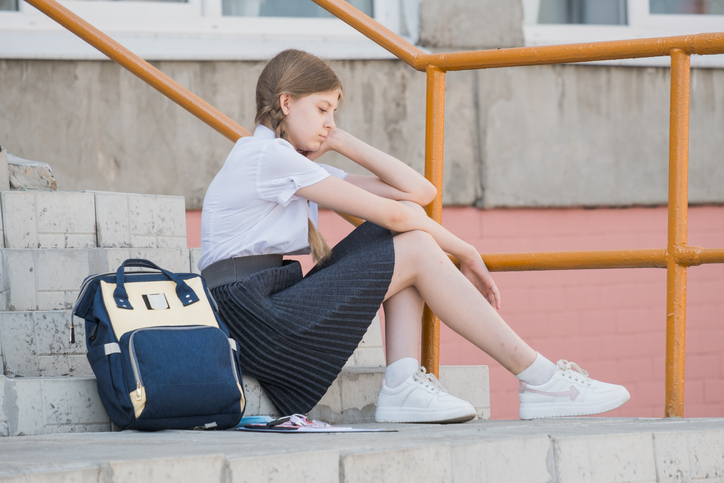
The following blog was contributed by Laura Wei, M.Ed., School Success Specialist at Friendzy.
Any educator who has taught during this pandemic understands the many challenges that surface throughout the school year – from handling changing learning models to the lack of digital resources, and more importantly, prioritizing the social-emotional well-being of students over academics. Back in 2020, I taught 5th grade in an auditorium with 27 students (there was not enough classroom space to accommodate social distancing). Every morning, students would walk in and sit in their designated seats which were a few seats away from their peers. They would scatter their materials on the floor beside their breakfast, take a deep breath, and try their best for another day of learning.
I had a student who I loved dearly. This was my second year teaching her, so I knew her and her family well. She became known as the student who was always the first to enter the classroom and greet all the teachers. And though she struggled in reading, she never let it discourage her and became one of my strongest discussion leaders.
When she didn’t show up for a couple of days, I became increasingly worried. I made a phone call and it was then I learned that her father had passed away suddenly from COVID-19. It was a family of 5 kids and the dad was the sole provider.
There was only one question that popped in my mind… What can I do to best support my grieving student and her family?
What is Grief?
Grief is the normal and natural emotional reaction to loss or change of any kind. It is the conflicting feelings caused by the end of or change in a familiar pattern or behavior and can affect our mind, body, emotions, and spirit. (source)
It is important to note that when students experience death, they may express their grieving outwardly (see pg. 8-9 for common responses to grief), and they may not. This distinction is critical as one should not assume another individual is not grieving just because we do not “see” a reaction. Everyone experiences grief differently and should be able to grieve at their own pace and in their own way.
How Children of Different Developmental Stages Understand Grief
| K-2 |
|
| 3-5 |
|
| 6-8 |
|
General Tips for the Classroom
- This topic may trigger memories and sadness for some students. Notify school counselors and parents of discussion in advance, for additional support
- Monitor the temperature and temperament of the classroom during lessons and discussion. Take breaks to stretch, breathe and laugh as needed. I would recommend printing for all students the desk version of Friendzy’s daily check-in tool to help with this. Grief can come in unexpected waves and this tool allows students the space to share how they are feeling at any given point and also provides teachers valuable insight on the classroom dynamic.
- Acknowledge and reinforce that it’s okay not to be okay.
- Encourage students to encourage one another. For younger students, this could be a smile, a note or drawing or kind word. For older students consider walking through the “How can we show comfort to others?”
- Give breaks as needed. This includes bathroom breaks, water breaks, and a designated calm space if possible. A calm space can include independent activities like coloring sheets and journaling printouts. Here are several Friendzy resources that could work for a calm space here:
Doodle downloads:
Additional Resources
